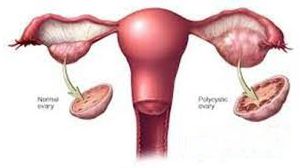Minimally Invasive Fibroid Removal: Hysteroscopic Myomectomy
Add to
Share
1,643 views
Report
2 years ago
Description
Hysteroscopic myomectomy is a minimally invasive surgical procedure used to remove uterine fibroids, also known as myomas. The procedure involves inserting a hysteroscope, a thin, lighted tube with a camera on the end, through the vagina and cervix and into the uterus. The hysteroscope allows the surgeon to see inside the uterus and locate the fibroids. Once the fibroids have been located, a small surgical instrument is inserted through the hysteroscope to remove them. This is typically done by cutting the fibroid into small pieces and removing them through the hysteroscope. In some cases, a specialized device called a morcellator may be used to help break up the fibroids for easier removal. Compared to traditional surgery for fibroid removal, hysteroscopic myomectomy offers several advantages. It is minimally invasive, meaning that it requires only a small incision and results in less pain and scarring than traditional surgery. It also has a shorter recovery time, allowing patients to return to their normal activities more quickly. Hysteroscopic myomectomy is a safe and effective option for women with small to medium-sized fibroids who wish to preserve their fertility. However, it may not be suitable for all patients, particularly those with larger or more numerous fibroids. A thorough evaluation by a gynecologist or other medical professional is necessary to determine whether hysteroscopic myomectomy is the best option. Overall, hysteroscopic myomectomy offers an effective and minimally invasive option for the removal of uterine fibroids. Its benefits include less pain, scarring, and recovery time compared to traditional surgery. As technology continues to advance, it is likely that hysteroscopic myomectomy and other minimally invasive surgical techniques will become even more widely available and effective for the treatment of fibroids and other gynecological conditions. Uterine fibroids are noncancerous growths that develop in the uterus. They are a common condition that affects many women, especially those of reproductive age. While fibroids are often asymptomatic and require no treatment, they can cause heavy menstrual bleeding, pelvic pain, and other symptoms that can significantly impact a woman's quality of life. Hysteroscopic myomectomy is a safe and effective surgical option for the treatment of fibroids. Unlike traditional surgery, which requires a large incision in the abdomen, hysteroscopic myomectomy is a minimally invasive procedure that can be performed on an outpatient basis. The procedure is typically done under general anesthesia, and patients can go home the same day. Recovery time is relatively quick, with most patients able to return to their normal activities within a week. Hysteroscopic myomectomy is particularly well-suited for women who wish to preserve their fertility. Unlike other surgical options for fibroid removal, such as hysterectomy, which involves removing the entire uterus, hysteroscopic myomectomy removes only the fibroids while leaving the uterus intact. However, not all women with fibroids are good candidates for hysteroscopic myomectomy. The procedure is generally only suitable for those with small to medium-sized fibroids that are located in the lining of the uterus. Women with larger or more numerous fibroids may require a different surgical approach. As with any surgical procedure, there are risks associated with hysteroscopic myomectomy. These include bleeding, infection, and damage to the uterus or other organs. However, complications are rare, and most patients experience few, if any, side effects. In conclusion, hysteroscopic myomectomy is a safe and effective option for the treatment of fibroids. It is minimally invasive, preserves fertility, and offers a shorter recovery time than traditional surgery. Women who are experiencing symptoms of fibroids should discuss their options with a gynecologist or other medical professional to determine whether hysteroscopic myomectomy is right for them.
Similar Videos






